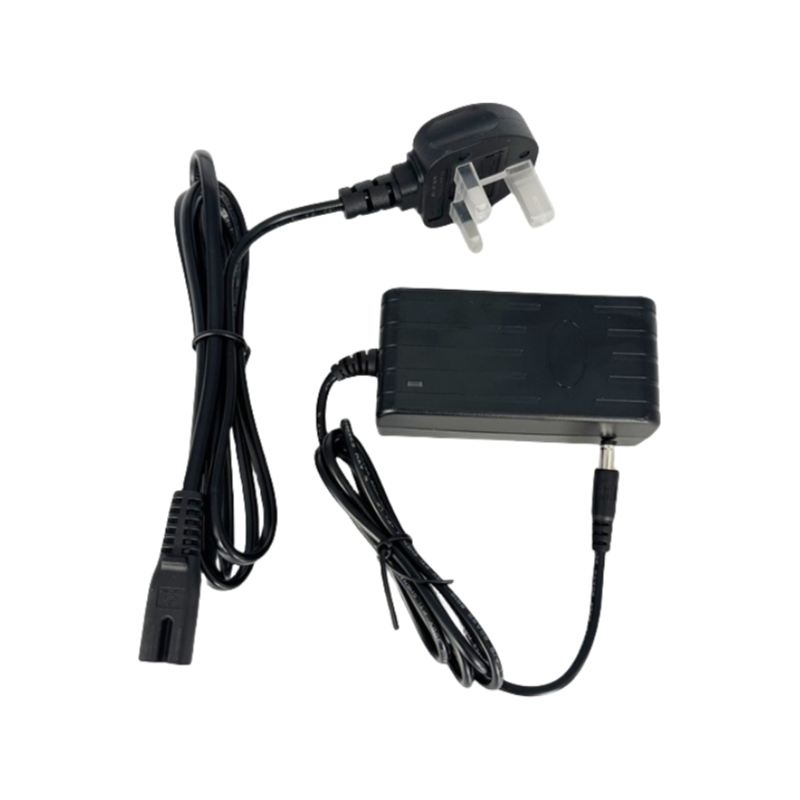
A LiFePO4 battery charger is specifically designed to safely and efficiently charge lithium iron phosphate batteries using a constant current-constant voltage (CC-CV) charging algorithm. These chargers maintain voltage within the range of 14.2V to 14.6V (for 12V systems), helping prevent overcharging and extending battery life.
They work in tandem with built-in Battery Management Systems (BMS) to ensure proper cell balancing, making them ideal for solar power setups, RVs, marine applications, and other off-grid uses. Thanks to multi-stage charging, they support battery lifespans of over 2,000 cycles.
LiFePO4 chargers differ from standard lithium-ion chargers in voltage limits and safety mechanisms.
Feature | LiFePO4 Charger | Li-ion Charger |
Max Voltage per Cell | 3.65V | 4.2V |
Voltage Accuracy | ±0.5% | ±1% |
Balancing Current | 50–200mA | 20–100mA |
Pro Tip: Avoid using Li-ion chargers for LiFePO4 batteries—they can cause overcharging and trigger BMS shutdown.
Multi-stage charging enhances both performance and longevity. The stages include:
- Bulk Stage (CC): Quickly charges the battery up to 80–90%.
- Absorption Stage (CV): Gently completes charging while balancing cells.
Skipping the absorption stage may reduce battery capacity by up to 15% in just 200 cycles. A 20A LiFePO4 charger can recharge a 100Ah battery in roughly 5 hours—twice as fast as most lead-acid chargers.
Most LiFePO4 chargers are not suitable for lead-acid batteries due to differing charging profiles.
Parameter | LiFePO4 | Lead-Acid |
Absorption Voltage | 14.6V | 14.8V |
Float Voltage | None | 13.8V |
Equalization | Not Required | 15.5V |
Pro Tip: Use dual-mode chargers or verify voltage compatibility to prevent undercharging or BMS errors.
MPPT (Maximum Power Point Tracking) chargers can deliver up to 30% more energy compared to PWM models. Combined with low self-discharge rates (<3% per month),they are excellent for seasonal solar systems.
For instance, a 100W solar panel paired with a 20A MPPT charger can recharge a 12V 100Ah battery in about 6 hours. Built-in low-temperature cutoffs (around -20°C) help prevent lithium plating in cold conditions.
- Spark-proof connectors
- Reverse polarity protection
- Overheat and overvoltage protection
- Thermal throttling
Marine-grade models often come with IP65 waterproof ratings. Chargers with active cell balancing can extend battery life by up to 40% compared to passive balancing systems.
Evlithium Charger’s models are equipped with advanced capabilities such as:
- Adaptive CC-CV algorithms
- CANbus-compatible BMS integration
- Wide 10–60V DC input range
- Automatic temperature compensation
- Corrosion-resistant marine-grade casings
Can I Use a Car Alternator to Charge a LiFePO4 Battery?
Yes, but only with a DC-DC converter to regulate voltage within 14.2V–14.6V. Direct alternator output may lead to BMS malfunctions.
Do LiFePO4 Chargers Require Cooling?
High-current models often need cooling. Performance can decrease by 12–18% if temperatures exceed 50°C.
How Long Do LiFePO4 Chargers Last?
Typically, expect a lifespan of 5–8 years. For added safety and durability, look for UL/CE certifications and galvanic isolation for surge protection.
Contact Person: Miss. Kiki
| WhatsApp : | +8617763224709 |
|---|---|
| Skype : | +8617763224709 |
| WeChat : | +8617763224709 |
| Email : | kiki@lifepo4-battery.com |